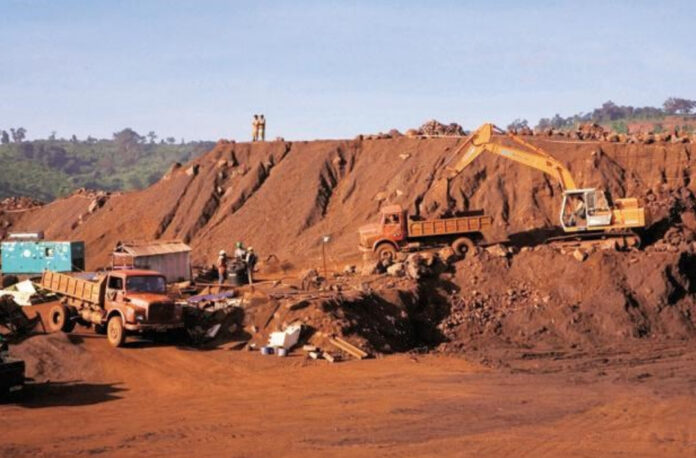India’s march toward becoming a technology superpower in the domains of electric vehicles, defense systems, energy grids, spaces, sciences critically depends on rare to find metals which most people have never heard of. These are the 17 rare earth elements that make or mar any country’s achievements in the tech sectors.
India is not short of them. From Odisha’s beach sands to the coastal stretches of Tamil Nadu and Kerala, the country holds around 6 to 7 percent of the world’s rare earth reserves. Yet it contributes barely 2 percent of global output. The problem is not below the soil, but above it – near absence of policy, foresight and perhaps inability to match China’s mining and exploration economic.
China controls nearly two-thirds of the world’s production and almost 90 percent of its refining facilities. Even ores mined in the U.S. or Australia are often sent to China for processing. This dominance gives Beijing quiet but immense leverage – the ability to decide who gets to build the next generation of technology.
India’s monazite-rich sands are managed largely by Indian Rare Earths Limited (IREL) under the Department of Atomic Energy, but for decades private mining was restricted due to nuclear sensitivity concerns. While China built a massive ecosystem of mines, magnets, finished electronics, India kept its resources idle or exported raw sand.
The result is a form of strategic dependence that undermines India’s technological sovereignty. Without rare earths, no electric vehicle motors, no wind turbines, no advanced radars, and no smartphones can exist.
China’s rare earth offer to India, Trump is livid
India’s recent drive toward rare earth self-reliance has gathered quiet momentum. The government has rolled out new incentives to attract domestic refining and magnet manufacturing, while strengthening the Indian Rare Earths Limited network to handle processing locally. This shift comes as China, the world’s dominant rare earth supplier, has made a calculated move — offering to resume limited supplies to India on the condition that the materials are not re-exported to any third country. The unspoken reference is to the United States, which has been struggling to secure its own non-Chinese supply chains.
China’s conditional offer to India emerged just as U.S. officials were pressing allies to diversify rare earth sourcing away from Chinese control. Beijing’s signal that India could buy only for its own consumption — not as a backdoor for American industries — most likely riled Trump who slapped yet higher tariffs on China. What began as a trade war over steel and semiconductors has thus extended into a strategic contest over the raw minerals that underwrite modern technology. India is now caught between opportunity and caution, wary of not being drawn into the rivalries of its two biggest trading partners.
India’s problem is not geological scarcity but the lack of refining and processing capability. Even if India mined aggressively, the ores would still have to be sent abroad for separation – mostly to China. That’s where the true choke point lies.
To break out, India needs a national rare earth mission: open mining to private investment under strict safeguards, set up domestic refining clusters, and link universities and defense labs for downstream innovation. Until India can turn its rare sands into strategic strength, it will continue to build on borrowed elements.
17 Rare Earths That Rule the Tech Growth
Scandium
A whitish, powdery metal found in traces in the Godavari and Mahanadi river basins. It hardens aluminum and makes it lighter – perfect for aircraft bodies and fuel cells needed in Hydrogen-powered trains. India extracts just a few grams a year. Without scandium, India’s aerospace alloys and hydrogen fuel-cell technologies remain at the mercy of imports. Magnesium alloys work for a while but do not last.
Yttrium
Yttrium is a soft, silvery substance found mixed with monazite sands in Kerala and Odisha. It used in LED screens and medical lasers without which image can not be generated on screens. Artificial phosphors are not as good.
Lanthanum
A greyish metallic dust recovered from beach sand residues. It sharpens the glass in cameras and powers hybrid car batteries. India’s optical glass and battery industries would remain at the mercy of imports. Zirconium or Cerium fill some gaps , but efficiency degrades.
Cerium
A soft, pale metal abundant in Indian monazite sands. It makes car exhausts cleaner and glass surfaces flawless. Needed for pollution control and glass polishing. The substitute Titanium dioxide does not give as good polish.
Praseodymium
This is the one which is troubling India most. A greenish-grey powder found alongside neodymium. It strengthens aircraft alloys and creates powerful magnets used in EV motors. Scarcity means a reduced domestic EV production and dependence on foreign magnet imports. Alloying with Neodymium can compensate partially, but that is also as scarce.
Neodymium
A silvery metal with a faint pink sheen found in small pockets across Odisha’s coastal sands. It is the heart of permanent magnets – used in wind turbines, electric cars, and hard drives. India’s renewable energy and defense radar programs risk slowdowns in dearth of this. Ferrite magnets are used as substitute but they are but are weaker and heavier.
Promethium
A radioactive trace element created mostly as a byproduct in nuclear reactors. Scarcity impacts nuclear batteries and scientific instruments. Tritium and plutonium isotopes can replace it in some applications .
Samarium
A greyish metallic dust, rare yet crucial for magnets that resist very high heat such as n fighter jets, missiles and satellites. Scarcity almost stalls India’s aerospace and defense production chains. Cobalt-based magnets offer partial relief but falter at extreme heat.
Europium
A bright white metal that glows red under light. It gives color to TV and computer screens, and even helps detect fake currency. Scarcity means India’s display and security printing industries would stall. Synthetic chemical phosphors fade faster and cost more.
Gadolinium
A dense grey metal that loves magnetism – it’s what lights up an MRI scan and absorbs stray neutrons in nuclear reactors. Scarcity can raise medical imaging costs and slow down nuclear modernization. The substitute iron oxide can serve in MRI agents, but less sharply.
Terbium
A lustrous metal mined with dysprosium, responsible for the green glow in screens and the efficiency of EV magnets. Shortage means both clean energy and display industries lose edge. Its workaround Dysprosium substitutes partially, though less efficiently.
Dysprosium
A silver-white, soft metal that helps magnets keep strength in high heat. Without it, wind turbines and EVs in India’s tropical climate would overheat and weaken. Its shortage threatens India’s green energy projects. Its substitute Magnet redesign and cooling systems mitigate thermal losses but raise cost.
Holmium
A soft, silvery element with the strongest magnetism of all known materials, used in fibre lasers and precision cutting tools. It shortfall affects communication fiber manufacturing and high-precision machinery. Erbium can take its place in some lasers, but with lower power.
Erbium
A faintly pink, glassy-looking metal found in trace sands. It amplifies signals in fiber optic cables, carrying India’s internet traffic. Internet speeds and telecom infrastructure would drag without this. Alternative amplifiers do exist but are bulkier and energy guzzlers.
Thulium
A light silver powder, extremely rare – only a few kilos are recovered worldwide each year. Used in portable X-ray machines and scientific lasers. Impact of scarcity hits India’s medical imaging and research capability. Other laser materials exist but are less efficient.
Ytterbium
A soft metal with a yellowish tint found in traces within monazite sands. Used in stress sensors, seismic monitors, and industrial lasers. Impact of scarcity: Impairs safety monitoring in infrastructure and earthquake detection systems. Mixed REE alloys can serve, but not as precisely.
Lutetium
A silvery-white metal, the densest and costliest of all rare earths, found only in minute grains of monazite. It powers PET scanners and acts as a catalyst in oil refining. Impact of scarcity: Raises healthcare and energy sector costs. Platinum-based catalysts can work but are prohibitively expensive.



